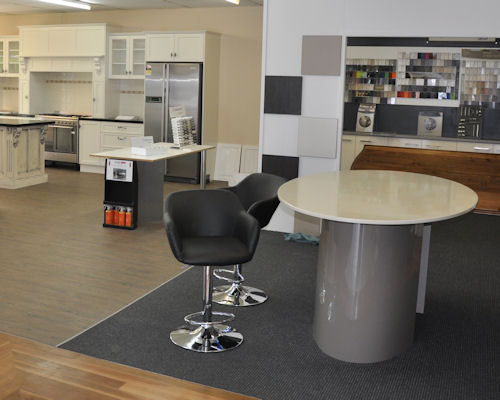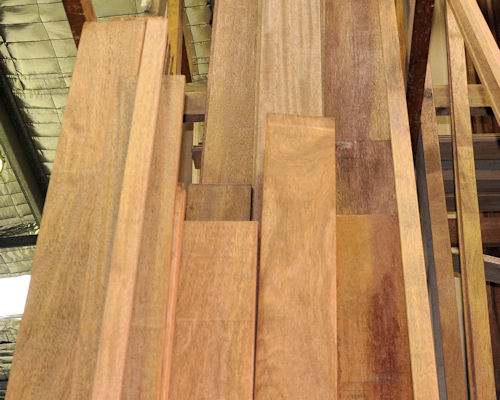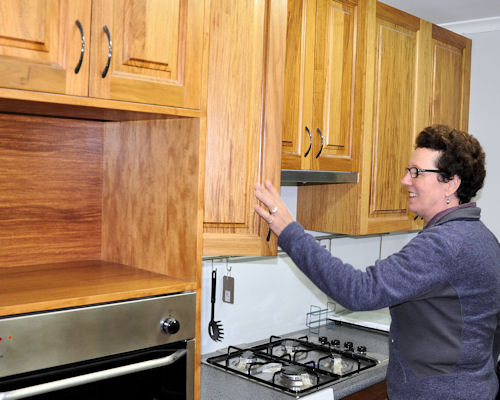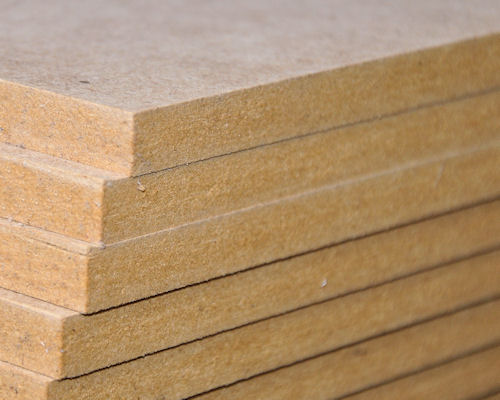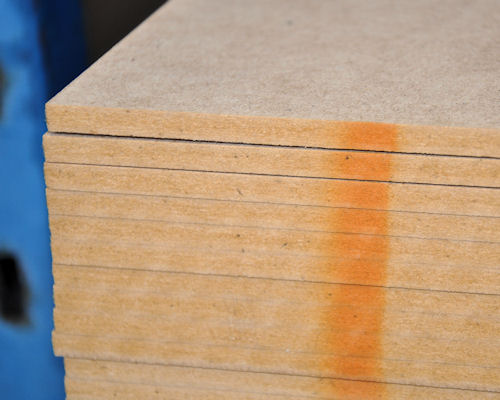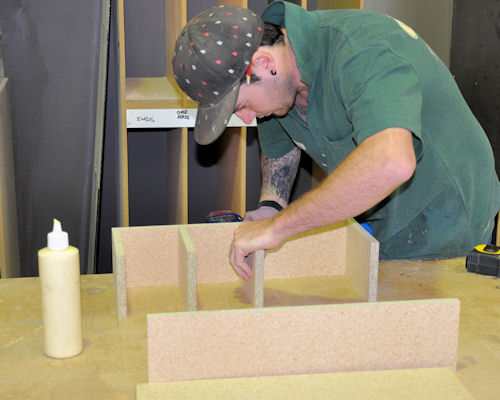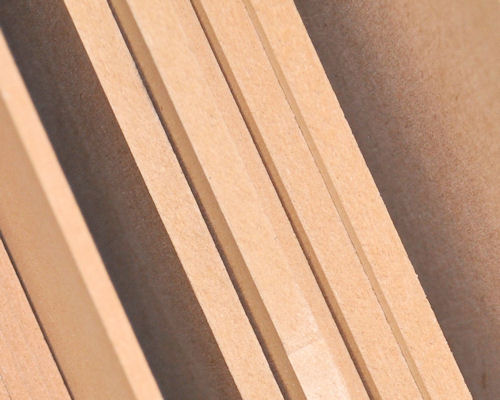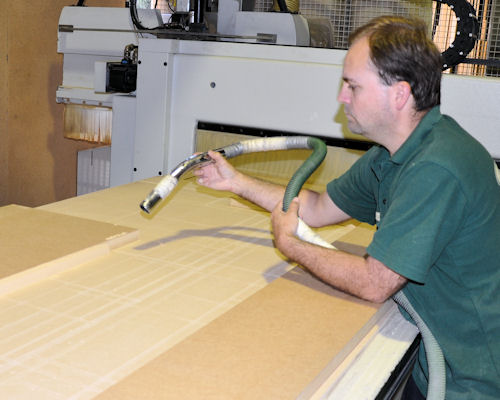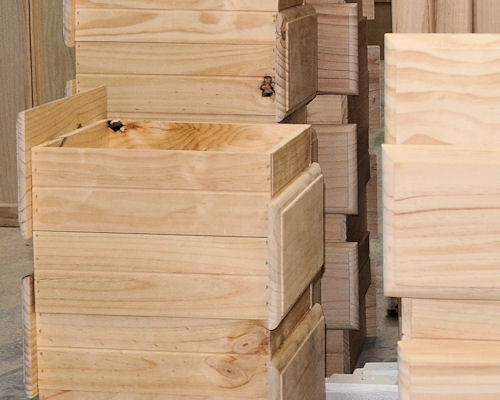Materials and processes
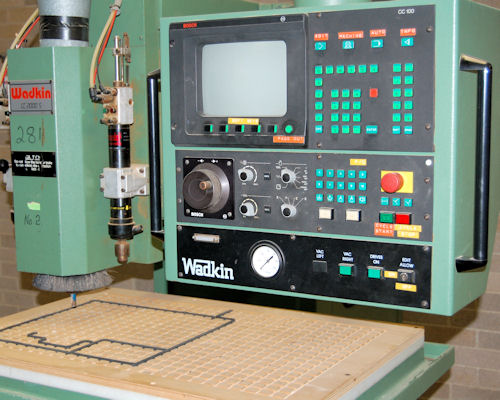 Audio for slide 4 (mp3 |6|KB)
Audio for slide 4 (mp3 |6|KB)
CNC (computer numerical controlled) routers are often used for cutting the profile, especially when it is also being shaped to a curve.

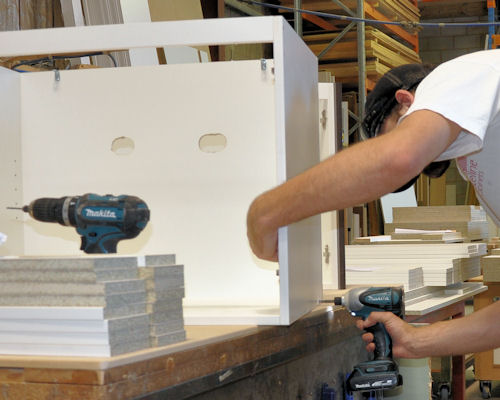 Audio for slide 8 (mp3 |6|KB)
Audio for slide 8 (mp3 |6|KB)
Once the boards are cut to size, they can also be edge-stripped with melamine or solid timber.
White melamine is the most popular veneer for internal carcases and shelving, and is often simply called whiteboard.

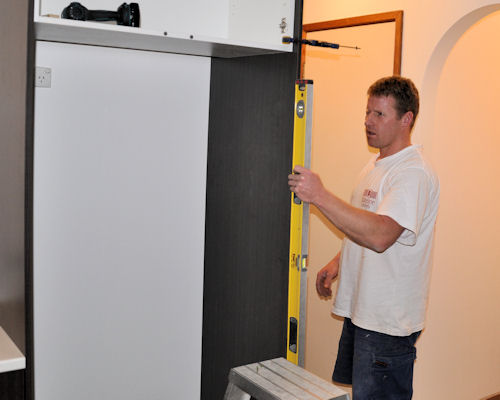 Audio for slide 9 (mp3 |6|KB)
Audio for slide 9 (mp3 |6|KB)
When the installation contains solid timber doors, the outside surfaces of the particleboard carcase are often faced with a matching timber veneer.
Alternatively, plastic laminates can be used throughout for the doors, carcase and bench tops.

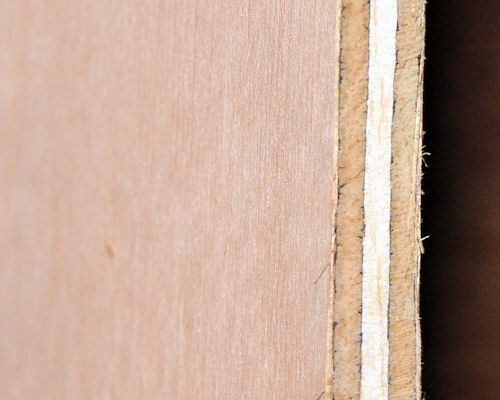 Audio for slide 12 (mp3 |6|KB)
Audio for slide 12 (mp3 |6|KB)
Plywood
Plywood is made of thin sheets of timber veneer bonded together with formaldehyde resin. Every second veneer is laid with the grain running at right angles to the layers above and below. This is what makes plywood strong in all directions, and able to be nailed close to the edge without splitting.


Learning activity
Audio 14 (mp3 |6|KB)The different materials discussed above have different nail-holding and screw-holding abilities. This will affect your choice of fasteners and the methods you use to join boards
Choose two of the materials that require different joining techniques because of their differences in screw and nail holding properties. Answer the following questions for each material.
- What type of material is it?
- What type of fastener (or fasteners) do you use with this material?
- What tools are required to work with these fasteners?
- Why are these fasteners the most suitable for this material - that is, why wouldn't other fasteners do the same job?
Share your answers with your trainer and other learners in the group. You can include digital photos that you've taken with your camera or mobile phone if you wish.

 Go to Assignment
Go to Assignment